Accommodations: Arctic River Lodge
I woke up in the middle of the night and peeked out from our curtains and sure enough, the sun was still shining and continued to shine all night long.
We are in Tarendo, a village just above the Arctic Circle – a very remote setting in the forest. For the folks who live here, the closest food store is about an hour away and in winter, a trek to get to. Our accommodation is the Arctic River Lodge, where you can relax by the fireside or participate in the activities the lodge offers. Being it is spring, the winter activities that require snow obviously are not being offered, but hiking, canoeing, etc., are available, although Heidi said that the river is rapid and if you are new to canoeing, best not to try it. The lodge also has a sauna. Next to the lodge is a husky kennel with 96 dogs.
A Day in the Life is unique to OAT, and many adventures and hands-on experiences are always offered and fun! Today our Day in the Life was learning about the huskies and getting the opportunity to feed them, scoop the poop in their cages, and walk them. Sounds like fun???? (Especially the poop scooping.). NOT!
Today was a rainy day so the planned activity of working in the dog kennel was not optimal. I for one, really did not want to go into the cages with the dogs to scoop the poop since the dogs were jumping up and down and jumping on people. I didn’t want to be covered in mud. Allan was brave and did do a good job with the pooper-scooper and then we both fed the animals. They get a wet mixture of cow stomach with a little chicken, and also a cupful of kibble. They carefully monitor the weight of the dogs and if the dogs seem to be getting a little chubby, the feed is cut back.
I believe the dogs give birth twice a year. The very first litter of puppies from years ago when the kennel first opened, were all given names beginning with the letter A. The second group of puppies, perhaps 6 months later were given names beginning with the letter B. In the kennel to date, they are already naming puppies starting with the letter I and in about three weeks time, new puppies will be born with names beginning with the letter J. The males and females are on opposite sides of the large kennel area.
When the weather is very cold, the dogs wear a jacket to protect them from the harsh winds etc. when they are outside. They also wear booties on their paws. Since the snow can melt and turn to ice and then melt again, the booties protect the dog’s paws from the breaking ice which would be like glass slivers. The booties and the jackets are sized to fit the dogs. The jackets and booties have a blue stripe on them for the males and red for the females. Collars are either red or blue.
The collars are not worn during the spring shedding season since the hair would shed all over except for under the collar and would look like a ruffle around the dog’s neck when the collar is removed, so it’s better not to have the collars on.
There are some dogs that are the leaders of the Husky team and others are followers. Female dogs can actually be stronger than the male dogs, but they are smaller in stature. The lead dogs know the commands for turning left, right, etc. so they lead the pack and the other dogs know to follow along. Training of the lead dogs begins at around 8 months of age and they train by pulling on something heavy and by wearing a harness. When a dog gets to be around 8 years of age, the dog starts to train down and is slowly acclimated to retirement. Most of the time, the dogs let the owners know they are getting too tired to continue being a sled dog. The puppies love to be around the dogs that are getting on in age and the older dogs seem to sense that their elder status is beneficial to the little ones.
The dogs are affectionate and for the most part, they all get along. An occasional fight will break out, but nothing serious.
An Alaskan Husky isn’t a pure bred dog, but is bred instead to be highly efficient sled dog. They can be a mixture of hound, sled dog, and northern breed. Personality is more important than looks.
It started to pour, so Allan and I opted out of walking the dogs down to the river. Even if it wasn’t raining, I might have done the walk, but not with a harness attached to me with a dog at the end. These dogs are powerful and can really pull. I prefer to keep standing upright and not be pulled face down into the mud.
It was soon time for lunch and we walked over to the outdoor lavvu, a temporary dwelling used by the Sami people. It has a design similar to a teepee but is less vertical and more stable in high winds. This lavvu allows the Sami people to follow their reindeer herds. We had lunch of reindeer, cooked in a muurykka, which is almost like a wok, but much flatter, which is then placed over a gas grill platform. I believe tunnbrödsrulle (also known as a tumlerulle) is what we had once the reindeer meat was cooked, since we placed it on a wrap and filled it with lettuce, onion, a sauce, tomato, and cucumber. Heidi did confirm this. It was delicious! We finished the meal with homemade cinnamon buns.
Since the weather was still rainy, Heidi canceled our walk and instead we watched an excellent movie called Stolen. The movie is based on a true story: Nine-year-old Elsa, a Sami girl, witnesses her beloved reindeer being poached and is sworn to secrecy by the poacher. Ten years later, she vows revenge.
We had pre-dinner drinks and then had a delicious salmon, mashed potato, asparagus, and string bean dinner. The salmon was delicious.
After dinner we all took a nature walk for about an hour with a guide and they pointed out mushrooms, lichen, bird calls (the cuckoo), and animal scat. One of the men in our tour sent this to the group: “Reindeer urine itself is not hallucinogenic, but it can contain hallucinogenic compounds if the reindeer has consumed certain mushrooms, like Amanita muscaria (fly agaric). These mushrooms contain psychoactive substances such as muscimol, which can pass through the reindeer’s system and remain active in its urine. Historically, some cultures have consumed this urine to experience the hallucinogenic effects without ingesting the toxic mushroom directly.” Who knew!
Off to bed.
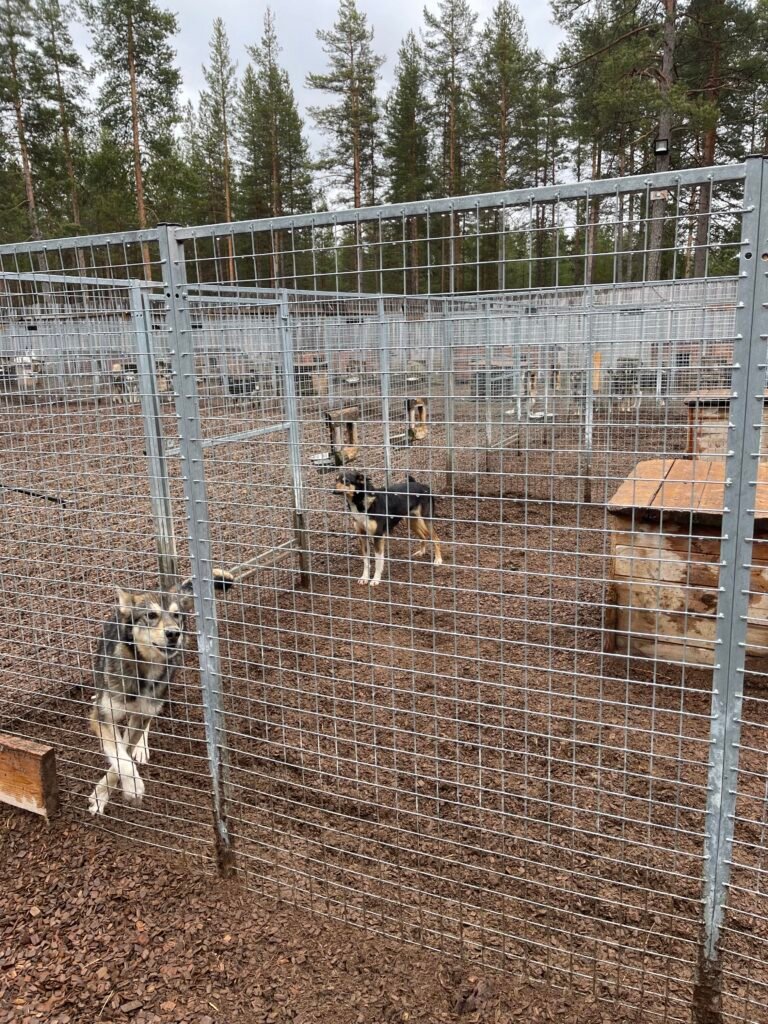
The dog kennels
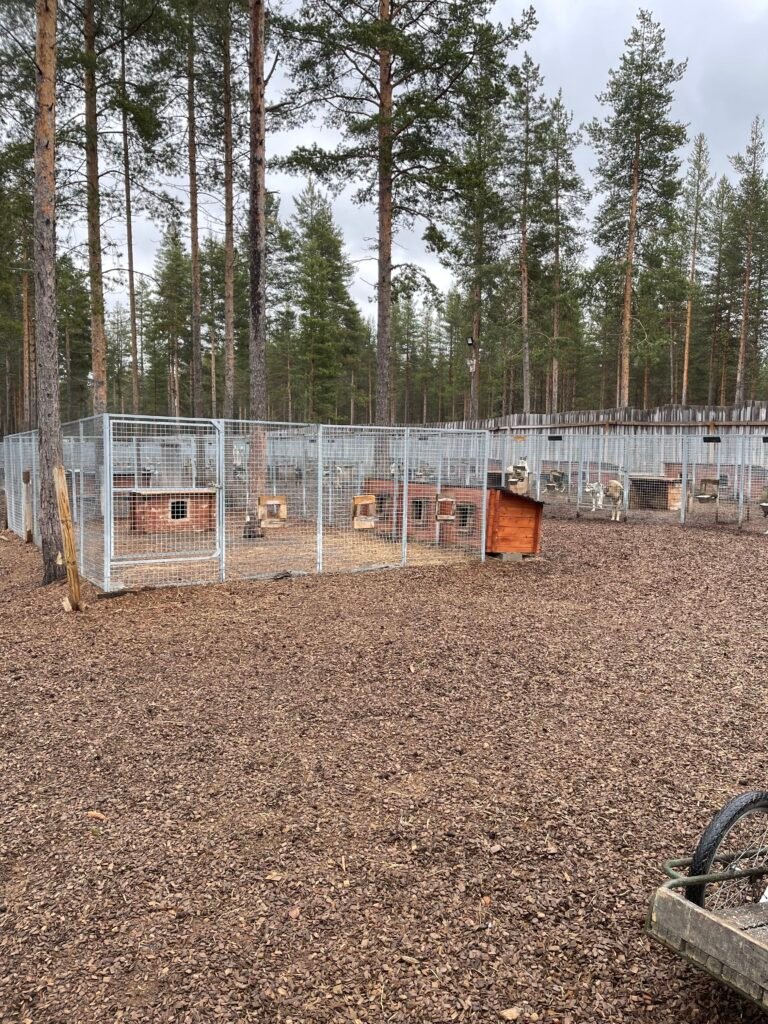
The kennels house 96 dogs.
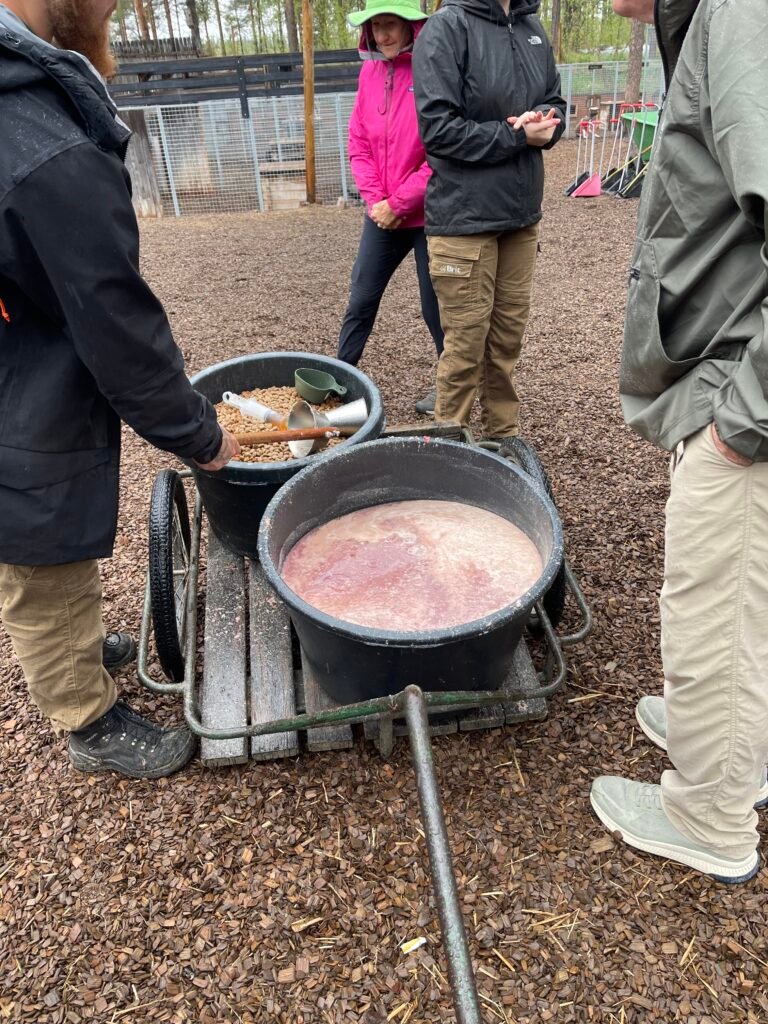
The food given to the dogs

Allan on pooper scooper duty
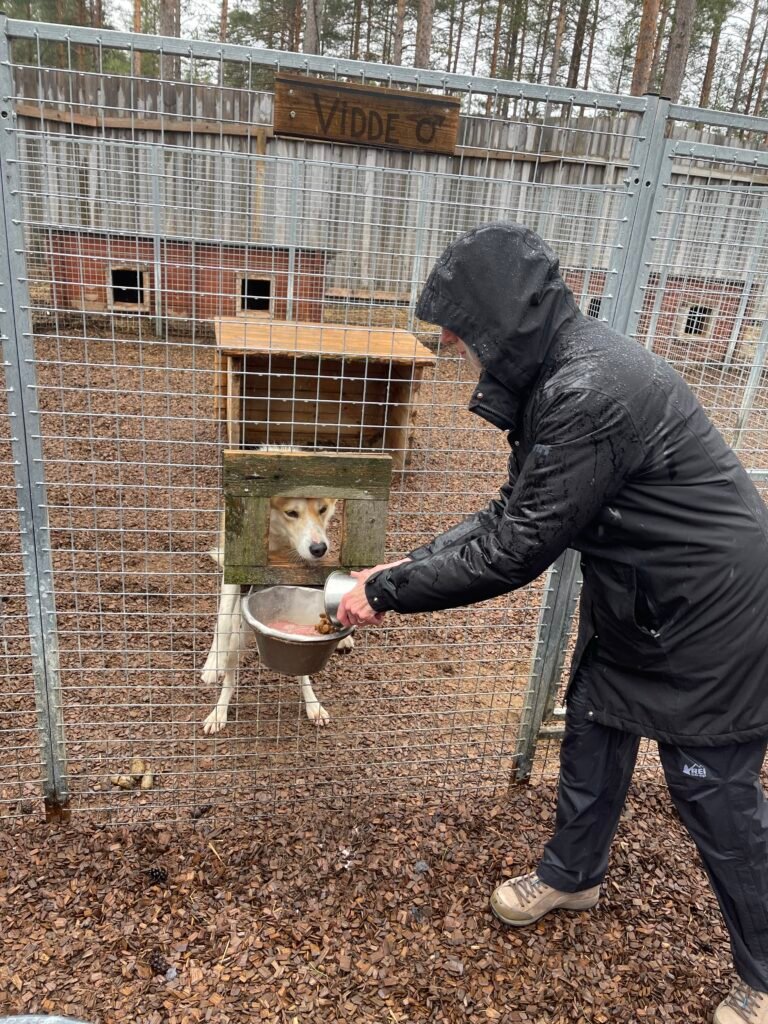
Irene feeding the dogs their kibble
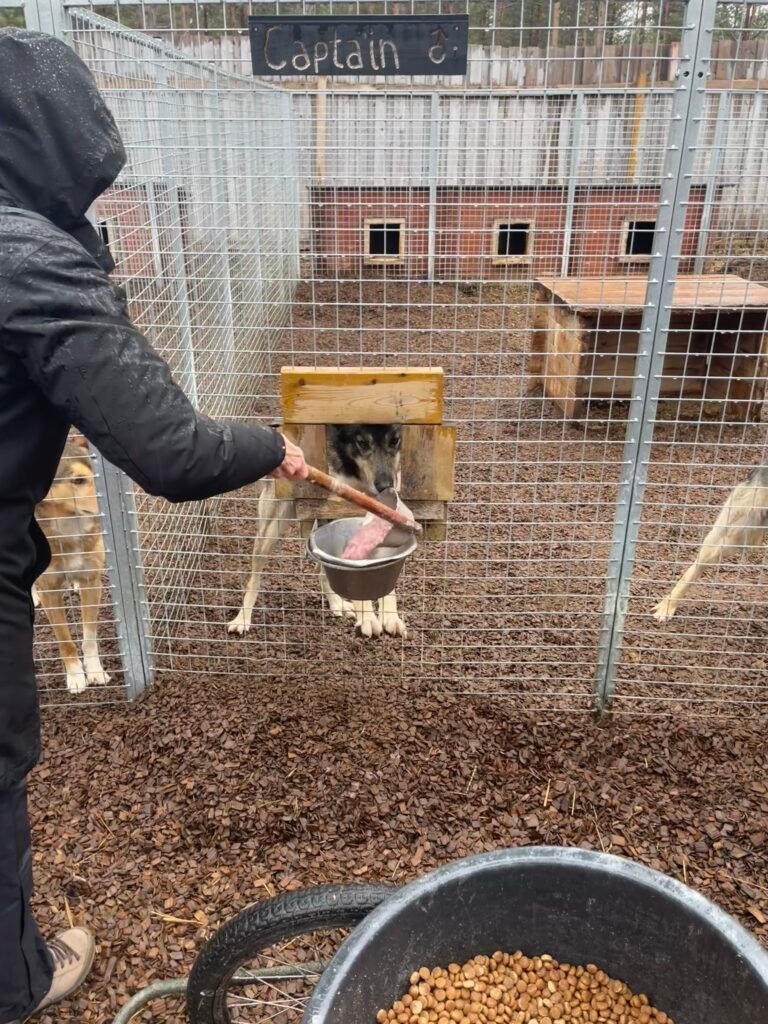
And their slop

Allan doing his share of feeding
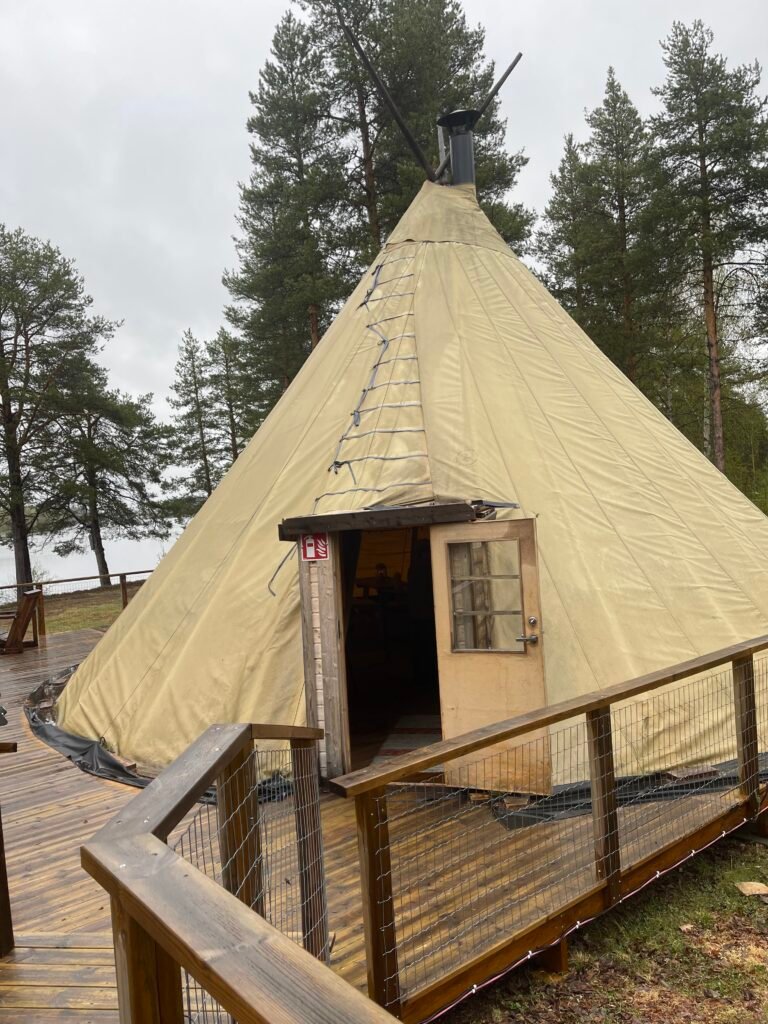
The lavvu

Spacious inside although a tad smoky.
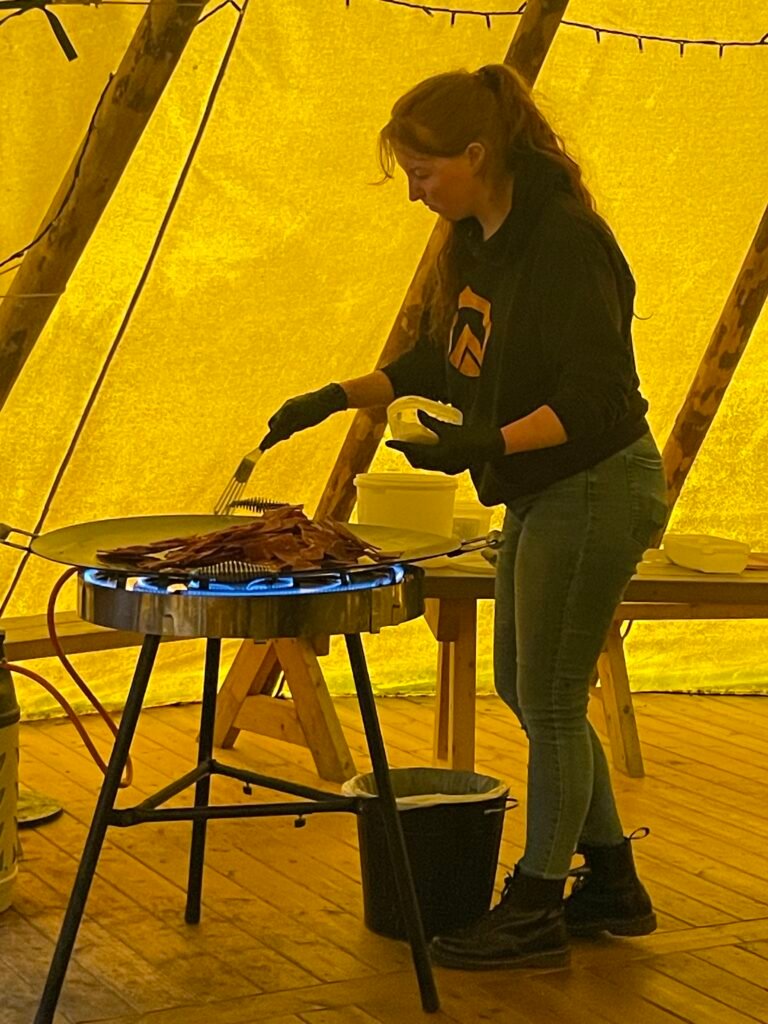
Cooking the reindeer meat

muurykka
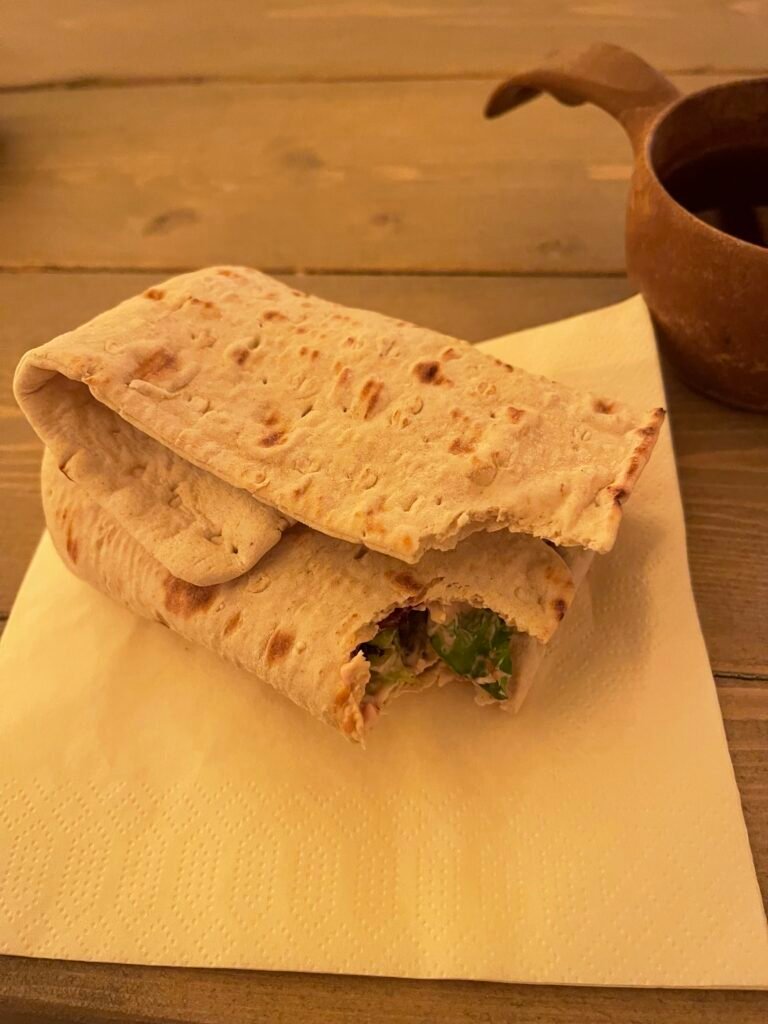
Our lunch
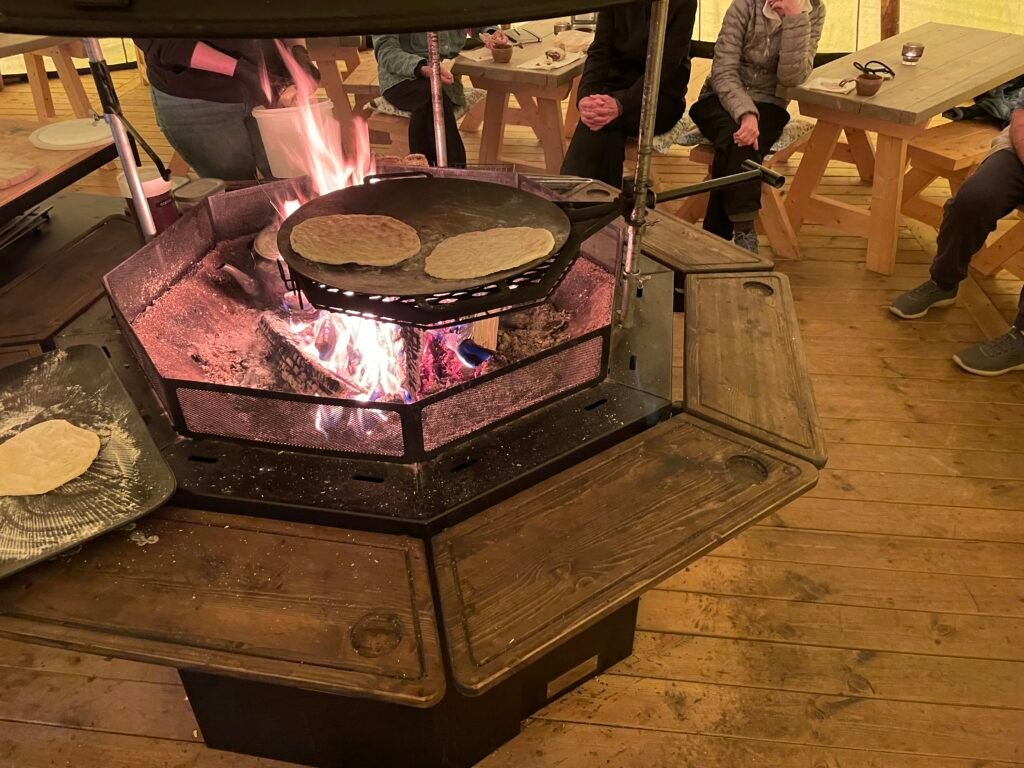
Baking bread for dinner tonight.

Along the nature walk
